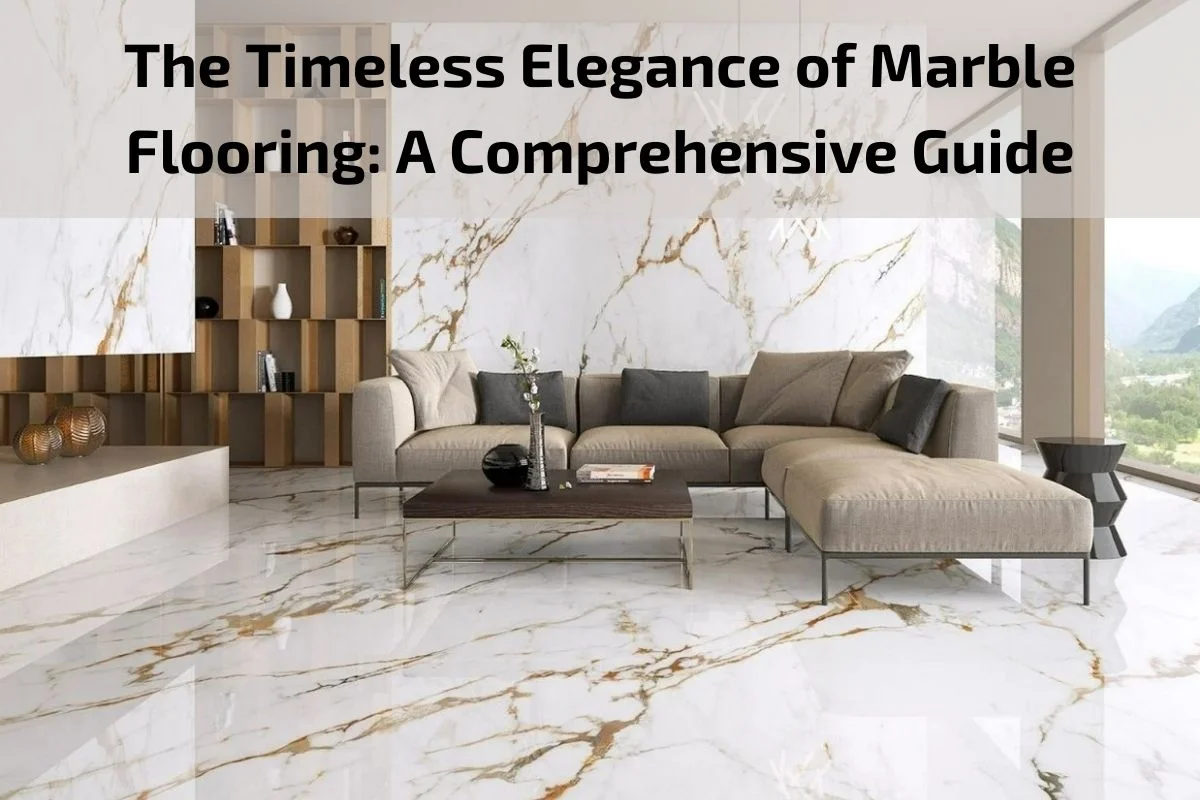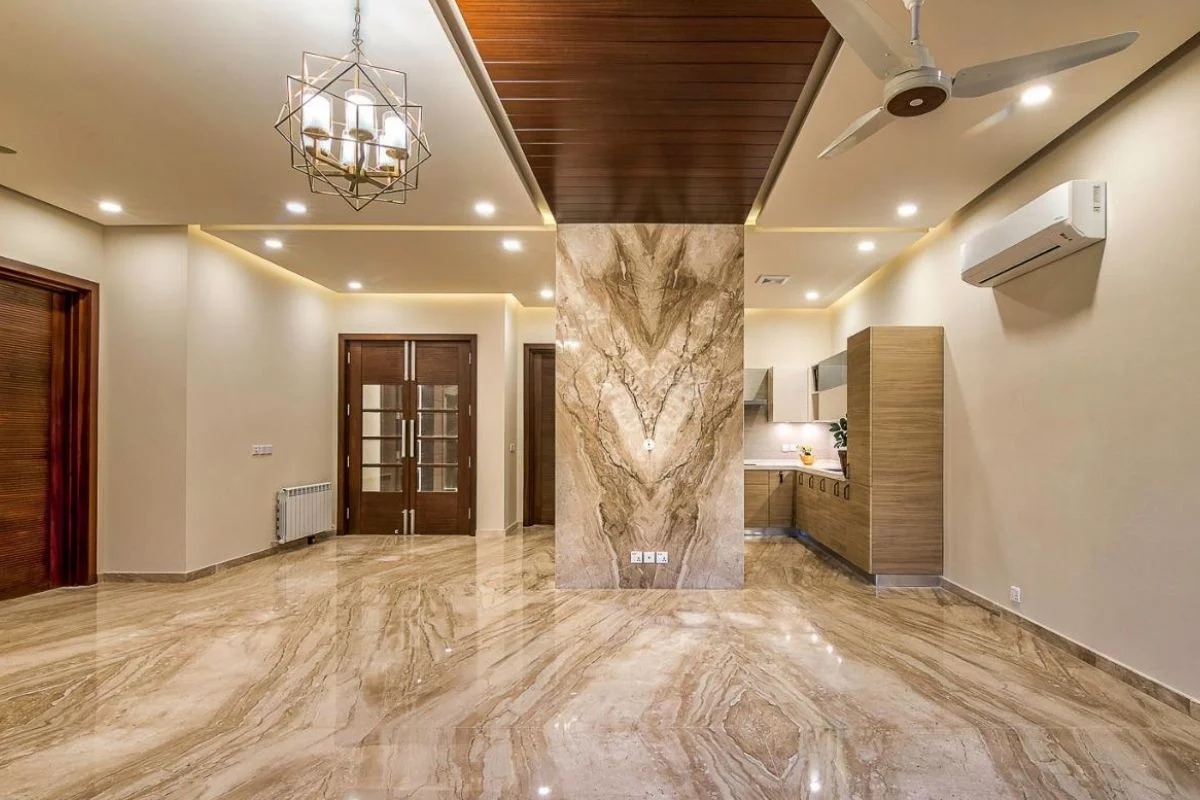Blog
 Marble flooring has long been revered for its unparalleled beauty and timeless elegance. From ancient palaces to modern-day mansions, the allure of marble transcends eras and design trends, making it a coveted choice for homeowners and designers alike. Its luxurious appearance, coupled with its durability and versatility, has cemented marble as a symbol of sophistication and refinement in interior design.
In this comprehensive guide, we delve into the captivating world of marble flooring, exploring its rich history, myriad benefits, and practical considerations for integrating it into your living spaces. Whether you’re embarking on a home renovation project or simply seeking inspiration for your next design endeavor, join us as we unravel the enduring charm and allure of marble flooring.
Marble flooring has long been revered for its unparalleled beauty and timeless elegance. From ancient palaces to modern-day mansions, the allure of marble transcends eras and design trends, making it a coveted choice for homeowners and designers alike. Its luxurious appearance, coupled with its durability and versatility, has cemented marble as a symbol of sophistication and refinement in interior design.
In this comprehensive guide, we delve into the captivating world of marble flooring, exploring its rich history, myriad benefits, and practical considerations for integrating it into your living spaces. Whether you’re embarking on a home renovation project or simply seeking inspiration for your next design endeavor, join us as we unravel the enduring charm and allure of marble flooring.
Importance of marble flooring in interior design
Marble flooring holds significant importance in interior design for several compelling reasons. Here are some key aspects highlighting its significance:
Timeless Elegance: Marble flooring exudes timeless elegance that effortlessly elevates the aesthetic appeal of any space. Its natural veining and variations add depth and character, creating a sense of luxury and sophistication that transcends trends and styles.
Versatility: One of the most notable features of marble flooring is its versatility. It complements a wide range of design styles, from classic and traditional to modern and contemporary. Whether used in grand hallways, luxurious bathrooms, or sleek kitchens, marble flooring enhances the ambiance and adds a touch of opulence to any setting.
Visual Impact: The visual impact of marble flooring is unparalleled. Its smooth surface reflects light, brightening up interiors and making spaces appear larger and more airy. The subtle sheen and depth of color variations in marble create a dynamic visual effect that captivates the eye and lends a sense of grandeur to the surroundings.
Durability and Longevity: Despite its luxurious appearance, marble flooring is incredibly durable and long-lasting when properly cared for. With its dense composition and resistance to wear and tear, marble flooring can withstand high-traffic areas and retain its beauty for generations, making it a wise investment for homeowners and designers alike.
Property Value: Marble flooring is often associated with luxury and prestige, which can significantly enhance the value of a property. Homes and commercial spaces adorned with marble flooring command attention and admiration, appealing to discerning buyers and tenants who appreciate the finer things in life.
Design Flexibility: Marble flooring offers unparalleled design flexibility, allowing for endless possibilities in terms of patterns, shapes, and layouts. Whether used as large format tiles, intricate mosaics, or geometric motifs, marble flooring can be customized to suit the unique design vision of any space, adding a touch of sophistication and refinement to the overall décor.
Types of Marble Flooring
Marble flooring comes in a variety of types, each distinguished by its unique color, veining patterns, and characteristics. Here are some of the most popular types of marble flooring:
Carrara Marble: Carrara marble, quarried in Italy, is perhaps one of the most well-known types of marble flooring. It features a white to light gray background with delicate veining, giving it a classic and timeless appearance. Carrara marble is prized for its elegant beauty and is commonly used in both traditional and modern interiors.
Calcutta Marble: Calcutta marble is highly sought after for its striking and dramatic appearance. It typically features a white background with bold, contrasting veins in shades of gray and gold. Calacatta marble is known for its luxurious and sophisticated look, making it a popular choice for upscale residential and commercial projects.
Statuaries Marble: Statuaries marble is renowned for its pure white background and distinctive veining, which often appears in shades of gray and gold. This high-quality marble is prized for its elegance and rarity, making it a favored choice for luxury interiors and architectural applications.
Emperor Marble: Emperor marble, originating from Spain, is characterized by its rich brown background and intricate veining in varying shades of beige and gold. This warm and earthy marble adds a touch of warmth and sophistication to interiors, making it particularly popular for flooring in residential spaces.
Nero Marquina Marble: Nero Marquina marble, sourced from Spain, is celebrated for its deep black background accented by bold white veining. This striking contrast creates a dramatic and eye-catching effect, making Nero Marquina marble a popular choice for creating dramatic focal points in interior design.
Arabescato Marble: Arabescato marble features a white to light gray background with intricate veining in shades of gray and brown. This elegant marble is prized for its intricate patterns and natural beauty, making it a versatile choice for flooring, countertops, and wall cladding in both residential and commercial settings.
Pros and Cons of Marble Flooring
Marble flooring is renowned for its timeless beauty and luxurious appeal, but like any flooring material, it comes with its own set of pros and cons. Understanding these factors can help homeowners and designers make informed decisions. Here’s a breakdown of the pros and cons of marble flooring:
Pros:
Elegant Appearance: Marble flooring exudes elegance and sophistication with its natural veining and unique patterns. It adds a touch of luxury to any space and enhances the overall aesthetic appeal of interiors.
Durability: When properly maintained, marble flooring is incredibly durable and can last for generations. It can withstand heavy foot traffic and is resistant to scratches and chips, making it suitable for high-traffic areas in residential and commercial settings.
Versatility: Marble flooring comes in a variety of colors, patterns, and finishes, offering versatility in design. Whether used in traditional or contemporary settings, marble flooring can complement a wide range of interior styles and aesthetics.
Cool Temperature: Marble flooring has natural thermal properties that help keep rooms cool in hot climates. This makes it a popular choice for homes located in warmer regions.
Increase Property Value: The luxurious appeal and timeless beauty of marble flooring can significantly enhance the value of a property. Homes and commercial spaces adorned with marble flooring often command higher resale values.
Cons:
Susceptibility to Stains: Marble is a porous natural stone, making it susceptible to staining from spills and liquids. Acidic substances such as citrus juices and vinegar can etch the surface of marble, causing permanent damage if not promptly cleaned.
Scratch Prone: While marble is durable, it is not impervious to scratches and abrasions. Heavy furniture or sharp objects can scratch the surface of marble flooring, detracting from its pristine appearance.
Requires Regular Maintenance: Marble flooring requires regular maintenance to preserve its beauty and integrity. This includes routine cleaning, sealing, and polishing to protect the surface and prevent staining and etching.
Cost Considerations: Marble flooring is considered a luxury material and is typically more expensive than other flooring options such as porcelain tile or hardwood. The cost of installation and maintenance should be factored into the overall budget of a project.
Prone to Etching: Marble is sensitive to acidic substances, which can cause etching or dull spots on the surface. It’s essential to use pH-neutral cleaners and avoid harsh chemicals to prevent damage to marble flooring.
Choosing the Right Marble Flooring
Choosing the right marble flooring for your space involves considering various factors to ensure that it aligns with your design preferences, practical needs, and budget constraints. Here’s a guide to help you make an informed decision:
Assess Your Space:
- Consider the location and usage of the space where the marble flooring will be installed. Is it a high-traffic area like a foyer or a low-traffic space like a bedroom?
- Evaluate the existing décor and architectural style of your home to ensure that the marble flooring complements the overall aesthetic.
- Marble comes in a range of colors, from classic white and gray tones to warmer hues like beige and brown. Consider the color palette of your space and choose marble flooring that harmonizes with the existing decor.
- Determine your preference for veining patterns. Some marble varieties feature bold and dramatic veining, while others have subtle and delicate patterns. Select a marble with veining that enhances the desired look of your space.
- Marble flooring is available in a wide range of price points, depending on factors such as rarity, quality, and origin. Establish a budget for your project and explore marble options that fall within your financial parameters.
- Keep in mind that while marble may have a higher upfront cost compared to other flooring materials, its durability and timeless appeal make it a worthwhile investment in the long run.
- Think about the practical aspects of maintenance and upkeep. Marble flooring requires regular sealing to protect against stains and etching. Consider whether you’re willing to commit to the maintenance requirements of marble.
- If you have pets or young children, opt for marble varieties that are more resistant to scratching and staining to ensure longevity and durability.
- Consult with interior designers, architects, or marble specialists to gain insights and recommendations tailored to your specific needs and preferences.
- Request samples of different marble varieties to see how they look in your space and how they interact with lighting and surrounding elements.
- Consider the installation process and any specific requirements for preparing the subfloor and laying the marble tiles. Professional installation is crucial to ensure a seamless and durable finish.
- Discuss installation timelines and any potential disruptions with your contractor to minimize inconvenience during the renovation process.
Installation and Maintenance Marble Flooring
Installing and maintaining marble flooring requires careful attention to detail and adherence to best practices to ensure its longevity and beauty. Here’s a comprehensive guide to installation and maintenance:
Installation:
Preparation:
- Ensure that the subfloor is clean, level, and free of any debris or moisture.
- Conduct a moisture test to prevent issues such as efflorescence and mold growth.
- Allow marble tiles to acclimate to the room’s temperature and humidity levels before installation.
- Choose a high-quality adhesive suitable for marble flooring to ensure proper adhesion and durability.
- Follow manufacturer guidelines for mixing and applying the adhesive to achieve optimal results.
- Plan the layout of marble tiles to ensure a symmetrical and aesthetically pleasing arrangement.
- Use a wet saw with a diamond blade to cut marble tiles to the desired size and shape, taking care to minimize waste and ensure precise cuts.
- Apply adhesive evenly to the subfloor using a notched trowel, taking care to maintain consistent coverage.
- Press marble tiles firmly into place, using spacers to ensure uniform grout lines.
- Check for levelness and adjust tiles as necessary to achieve a flat and even surface.
- Allow adhesive to cure completely before grouting, typically 24-48 hours depending on the product used.
- Choose a grout color that complements the natural beauty of the marble and enhances the overall aesthetic.
- Apply grout evenly using a grout float, pressing it into the joints and removing excess with a damp sponge.
- Seal grout lines once the grout has cured to protect against staining and moisture penetration.
- Sweep or vacuum marble flooring regularly to remove dust, dirt, and debris that can scratch the surface.
- Use a damp mop or soft cloth with a pH-neutral cleaner to clean marble floors, avoiding harsh chemicals that can damage the surface.
- Seal marble flooring regularly to protect against stains, moisture, and etching.
- Choose a high-quality penetrating sealer designed specifically for marble and follow manufacturer instructions for application.
- Address spills and stains promptly to prevent them from penetrating the porous surface of the marble.
- Blot spills with a clean, absorbent cloth and clean the affected area with a mild detergent and water.
- For stubborn stains, use a poultice made from baking soda and water or a commercial marble stain remover.
- Maintain the natural luster and shine of marble flooring by periodically polishing the surface.
- Use a marble polishing powder or professional polishing equipment to restore the gloss and smoothness of the marble.
- Place mats or area rugs in high-traffic areas and entryways to minimize wear and tear on marble flooring.
- Use felt pads on furniture legs to prevent scratching and scuffing of the marble surface.
- Avoid dragging heavy objects across marble floors to prevent damage and ensure longevity.
Conclusion
In conclusion, marble flooring stands as a timeless symbol of elegance and luxury in interior design. Its natural beauty, durability, and versatility make it a coveted choice for homeowners and designers seeking to create spaces that exude sophistication and refinement.




